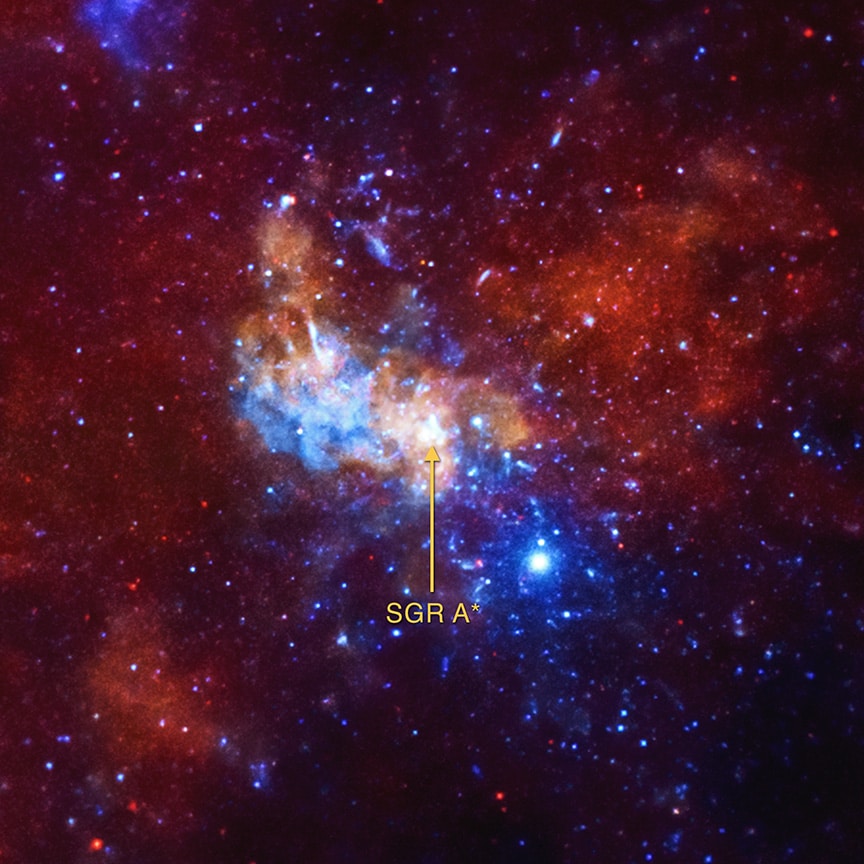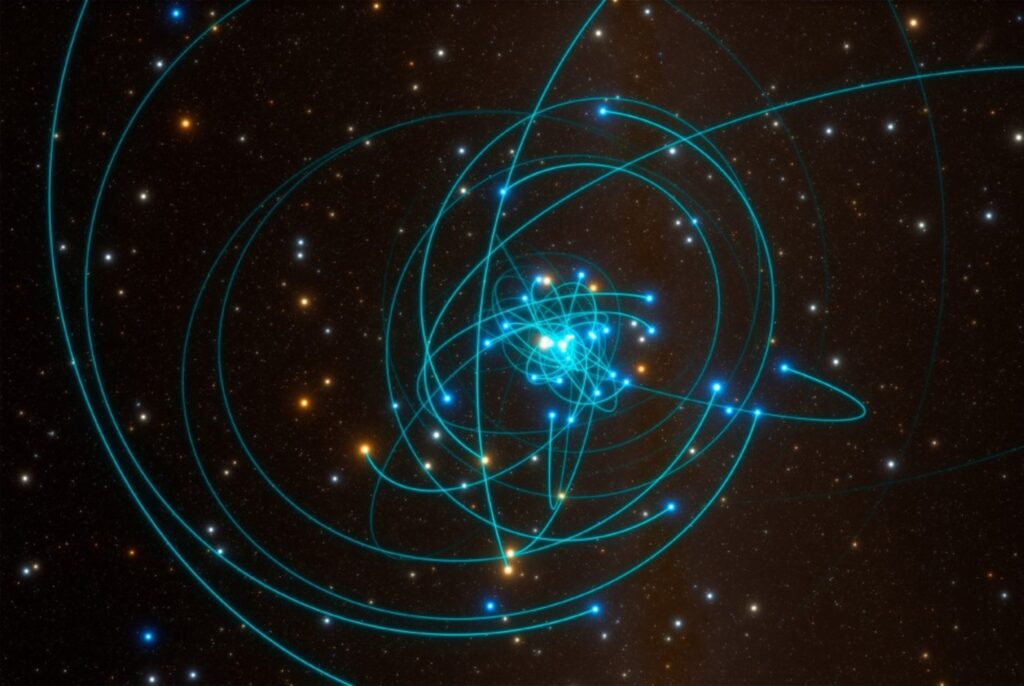When thinking about a bustling Manhattan subway station at the height of rush hour, you might imagine bodies packed tightly together, jostling and bumping as they navigate the crowded platform. Now, scale that image up to cosmic proportions and replace the harried commuters with stars moving at breakneck speeds. That’s the reality at the heart of our galaxy, where stars are so densely packed that collisions are not just likely, but inevitable.
Stars, ancient and massive, whirl around a supermassive black hole known as Sagittarius A* (Sgr A*), their fates intertwined in a cycle of destruction and rebirth. Now, a team of astrophysicists from Northwestern University has shed new light on the bizarre behavior of these zombie stars, revealing a world where stellar cannibalism is the order of the day.
Using a sophisticated simulation, the Northwestern researchers traced the violent journeys of 1,000 stars as they orbit Sgr A*. What they found was a world of extremes, where the usual rules of stellar evolution are thrown out the window.
Sanaea C. Rose, the Lindheimer Postdoctoral Fellow at Northwestern’s Center for Interdisciplinary Exploration and Research in Astrophysics (CIERA), led the research and presented the findings at the American Physical Society’s (APS) April meeting in Sacramento.

“The region around the central black hole is dense with stars moving at extremely high speeds,” says Rose in a media release. “It’s a bit like running through an incredibly crowded subway station in New York City during rush hour. If you aren’t colliding into other people, then you are passing very closely by them. For stars, these near collisions still cause them to interact gravitationally. We wanted to explore what these collisions and interactions mean for the stellar population and characterize their outcomes.”
At the very center of this cosmic maelstrom, within just 0.01 parsecs (about 0.03 light-years) of the supermassive black hole, stars careen around at mind-boggling speeds, reaching thousands of kilometers per second. Here, collisions are frequent but rarely head-on. Instead, stars graze past each other in what Rose describes as “violent high fives.”
These glancing blows may not be enough to completely destroy the stars, but they do take a toll. With each collision, stars shed their outer layers, becoming stripped-down, low-mass versions of their former selves. It’s a bit like a cosmic game of bumper cars, with stars constantly sideswiping each other and losing mass in the process.
“They whack into each other and keep going,” explains Rose. “This causes the stars to eject some material and lose their outer layers. Depending on how fast they are moving and how much they overlap when they collide, they might lose quite a bit of their outer layers. These destructive collisions result in a population of strange, stripped down, low-mass stars.”
But venture a little farther out, beyond that 0.01 parsec boundary, and the picture changes. Here, stars move at a comparatively leisurely pace of hundreds of kilometers per second. When they collide in this region, they don’t have enough speed to break free from each other’s gravitational grip. Instead, they merge, becoming more massive in the process.
It’s here that we find the true cosmic cannibals – zombie stars that have grown to gargantuan proportions by consuming their neighbors. Through repeated collisions and mergers, some stars in this region can become ten times more massive than our own sun. And like the mythical creatures of lore, they seem to defy the ravages of time.
You see, when stars merge, they don’t just gain mass. They also gain a fresh supply of hydrogen, the fuel that powers their nuclear furnaces. This infusion of new material can make an old star look surprisingly youthful, belying its true age. But this cosmic fountain of youth comes at a price.
Massive stars, like the ones created through these mergers, are the gas-guzzlers of the cosmos. They burn through their fuel at an astonishing rate, living fast and dying young. So while these cannibal stars may appear rejuvenated, their newfound youth is fleeting.
The research is more than just a curious look at the oddities of our galactic center. It’s a window into the history and evolution of the Milky Way itself. The region around Sgr A* is notoriously difficult to observe, obscured by the bright light and intense gravitational pull of the supermassive black hole. By simulating the interactions of stars in this extreme environment, Rose and her colleagues can begin to piece together the puzzle of how our galaxy’s center came to be.
It’s a realm unlike any other, where the normal rules of stellar physics break down and the unexpected becomes commonplace. By studying the bizarre behavior of these zombie stars, astronomers can gain new insights into the forces that shape not just our own galaxy, but the countless others that populate the cosmos.
So the next time you find yourself gazing up at the night sky, take a moment to ponder the strange and wondrous happenings at the heart of our Milky Way. In that distant, crowded realm, stars are locked in a never-ending dance of destruction and regeneration, their fates dictated by the immense gravitational power of a supermassive black hole.












